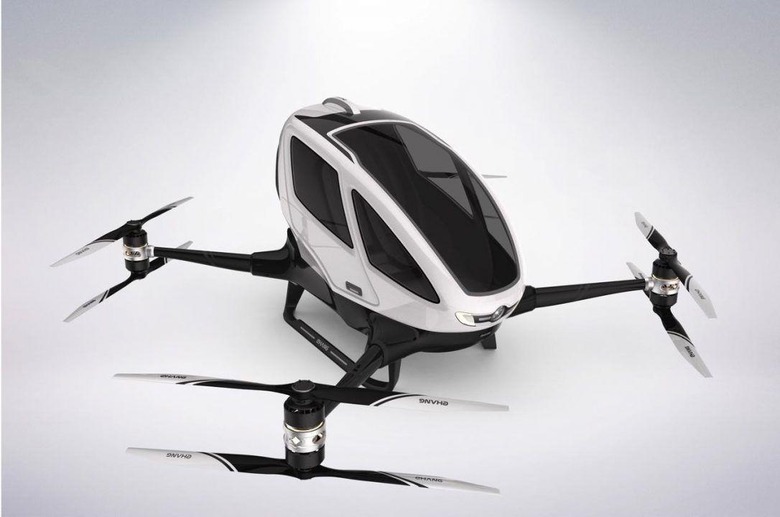Dubai Sets Autonomous Flying Cars Loose This Summer
The skies over Dubai will be abuzz with autonomous flying cars as soon as this year, with a human-sized octacopter the latest folly for well-heeled residents and visitors. Dubai's Roads and Transport Authority (RTA) announced the news this week, with a pod-like Chinese flying car selected as the first approved vehicle. Passengers won't have to do anything but pick a destination.
That'll be courtesy of a touchscreen on the vehicle's dashboard, with a map punctuated with dots. Each dot will represent a place the "car", the EHang 184, can take off and land at. Once selected, it'll automatically take off, fly to the destination, and land, entirely without the involvement of the people inside.
EHang first showed off the drone back in early 2016, dubbing it an "Autonomous Aerial Vehicle" or AAV. The company normally makes consumer-scale drones – indeed, its Ghostdrone 2.0 VR is available in the US at Best Buy – but the 184 was exponentially larger. Since its cargo is a lot more valuable than a camera, too, there's unsurprisingly more safety technology onboard.
For a start there are eight rotors, allowing for redundancy should one or more fail. Redundant processors and sensors can kick in should the primary systems encounter a problem, and the AAV is designed to automatically locate the nearest safe landing spot and touch down should that happen. EHang's system uses a centralized control room from which it can monitor and take control of the 184 via an encrypted LTE connection.
As for performance, though the top speed is around 100 mph, Dubai is likely to restrict the EHang 184 to around 62 mph. Electric, it's able to fly for around 30 minutes on a full charge, and recharge in 1-2 hours. Maximum cruising altitude is 3,000 feet, and the craft has a footprint roughly 13 feet square; it uses cameras among other sensors to identify a landing spot and position itself accordingly.

"The AAV is designed to operate under all climatic conditions unless there is a thunderstorm," Mattar Al Tayer, director general and chairman of the RTA, said of the 184. "The vehicle is fitted with highly accurate sensors with a very low-error threshold and can resist vibrations and extreme temperatures." Each pod will accommodate a single passenger.
Dubai may be the first city to allow the 184 into the skies, but it won't be the last. EHang said last year that it planned to begin test flights in Nevada, working with the state-sponsored Nevada Institute for Autonomous Systems to explore the potential for the craft in the US. When that might take place is currently unclear.
VIA The National
